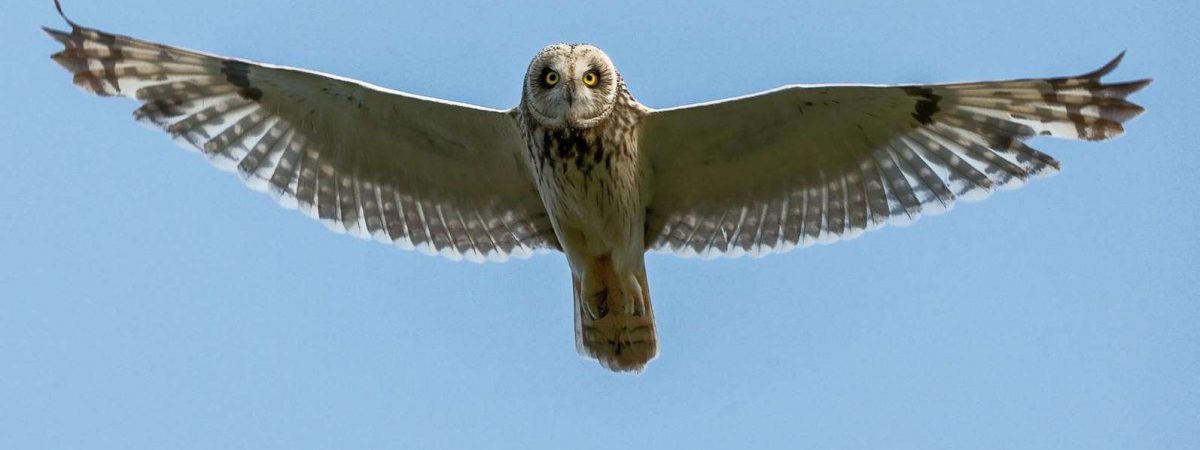
In the southern state of Arkansas, there are 6 different owl species that you may encounter when birdwatching.
Table of Contents
ToggleThese owls are:
- Great Horned Owl
- Barred Owl
- Eastern Screech-owl
- Long-eared Owl
- Short-eared Owl
- Barn Owl
Want to learn more? This National Geographic Book on Owls is a great read!
The most commonly seen of these species is the Great Horned Owl whilst the Short-eared Owl is the least frequently sighted of these owls in Arkansas.
The state of Arkansas is classified as having a humid and sub-tropical environment which means that whilst the summers are extremely hot the winters are only mild.
Across Arkansas there are 52 designated state parks and 7 national parks, there are also 3 designated national forests.
Now that we have looked at a little overview of Arkansas, let’s get into the details of the different owl species that can be found in this state.
Want to attract Owls to your yard? Take a look at our article!
What Owls can be seen in Arkansas?
Table of Contents
1. Barn Owl
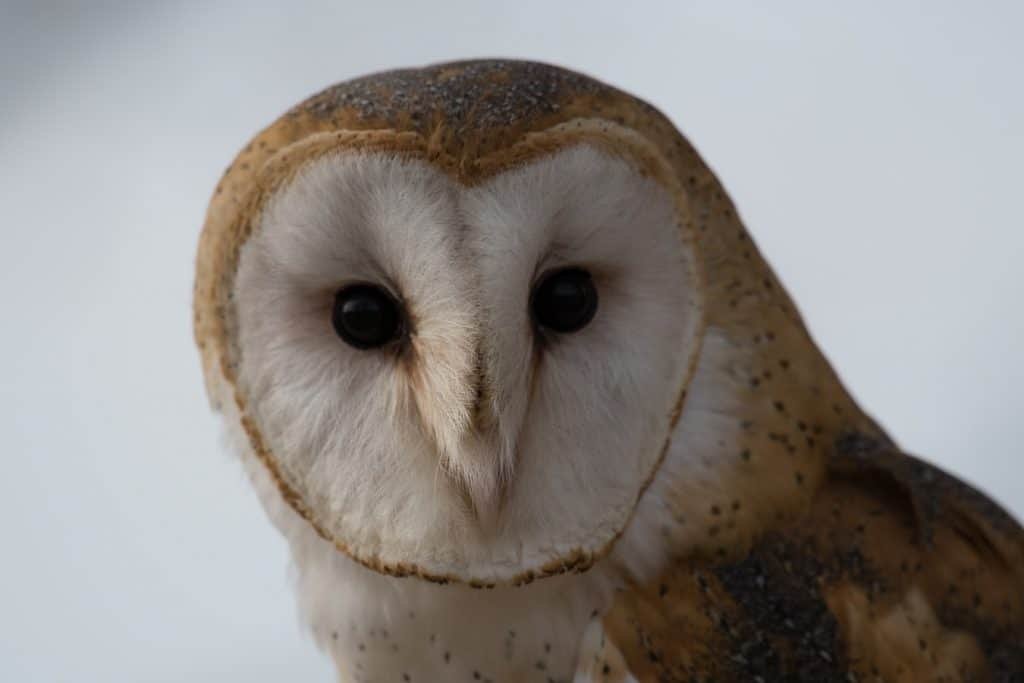
Wingspan
107 to 110 cm
Weight
430 – 620 g
Life Expectancy
Up to 4 years
Diet
Voles, Shrews & Mice
Barn Owls are covered in pale feathers. These feathers are a mix of buff and grey on both the head and their wings.
During the daytime these colors are more noticeable whilst at night they can appear completely white, this is why it has gained the nickname of the Ghost Owl.
These owls have a wide range and make their nests and territories in open country areas such as grasslands.
Whilst there have been reports of barn owls mating with several females, most of them remain monogamous and form long-lasting breeding pairs.
Males will bring food to the females as she gets the nest ready for incubation. These birds happily share hunting grounds with others of their species, but they become territorial with other species of owls.
These owls are residents of 48 states including Arkansas, they can be seen in the state throughout the year. They have most commonly been sighted in the southern half of the state.
2. Eastern Screech Owl
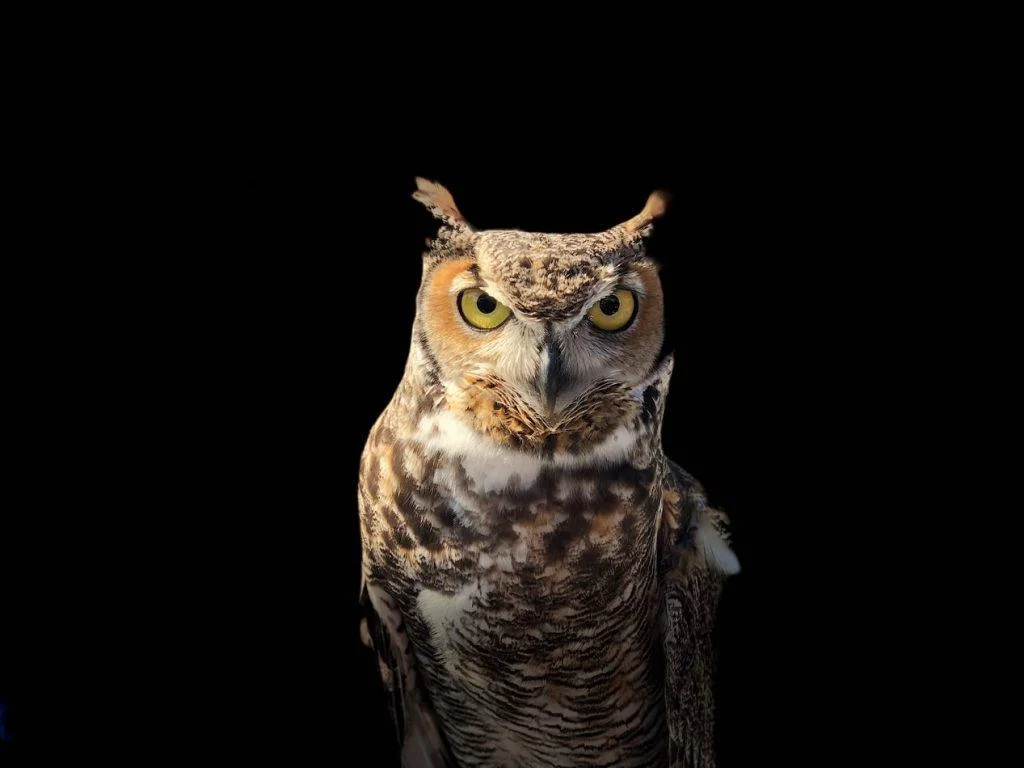
Wingspan
46 to 61 cm
Weight
160 g
Life Expectancy
14 years
Diet
Rats, Squirrels, Rabbits & Skunks
These birds have small and stocky bodies and are covered in grey feathers, as the name suggests they are found through the eastern states whilst the Western Screech Owl is seen to the west of the United States.
They appear to be more abundant in the southern states as well. These owls do not form long-term breeding pairs, but mates will raise their young together for the first months.
Sometimes males will mate with two females, but most stay monogamous.
Males do most of the work when defending their small territories and will also feed females and their young when they first hatch.
These owls make their habitats in dense forests and utilize any man-made bird boxes that have been added to their territory. They have also been known to nest and breed successfully in city parks and farmlands.
These small owls can be seen in Arkansas throughout the year and their range spreads across all regions of the state.
They have a fairly even distribution of sightings but they appear to be least commonly recorded in the central regions of Arkansas.
3. Great Horned Owl
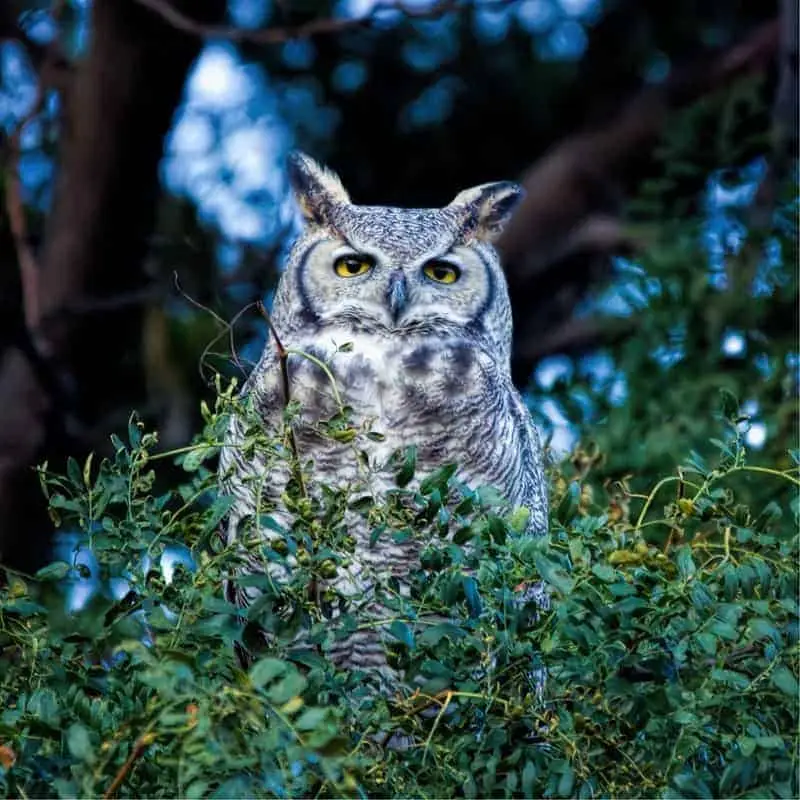
Wingspan
~140cm
Weight
1.4 kg
Life Expectancy
28 years old
Diet
Squirrels, Rabbits & Skunks
This owl gets its name from its most identifiable feature which are pointed ear tufts that look like horns on top of their heads.
Their feathers are greyish-brown shades and they are thick to cover its stocky body, their faces tend to be orange in colour.
These birds form long term breeding pairs, the breeding pairs have been known to stay with each other outside of the breeding season.
They also remain monogamous to their partner and are territorial birds. These owls have a series of hoots that they will use to defend their territory and both members of the breeding pair will help defend their nests.
In fact, these birds are so territorial that they have at times been known to kill other individuals of their own species as well as different bird species.
They are often harassed by other species of birds such as crows which will call and peck at them to try and get them to abandon the area and their eggs.
These owls have been sighted in all 50 states and they can be seen in all regions of Arkansas throughout the whole of the year.
Whilst there are lots of sightings of this owl, most of them seem to be in the northern half of the state.
4. Short-Eared Owl
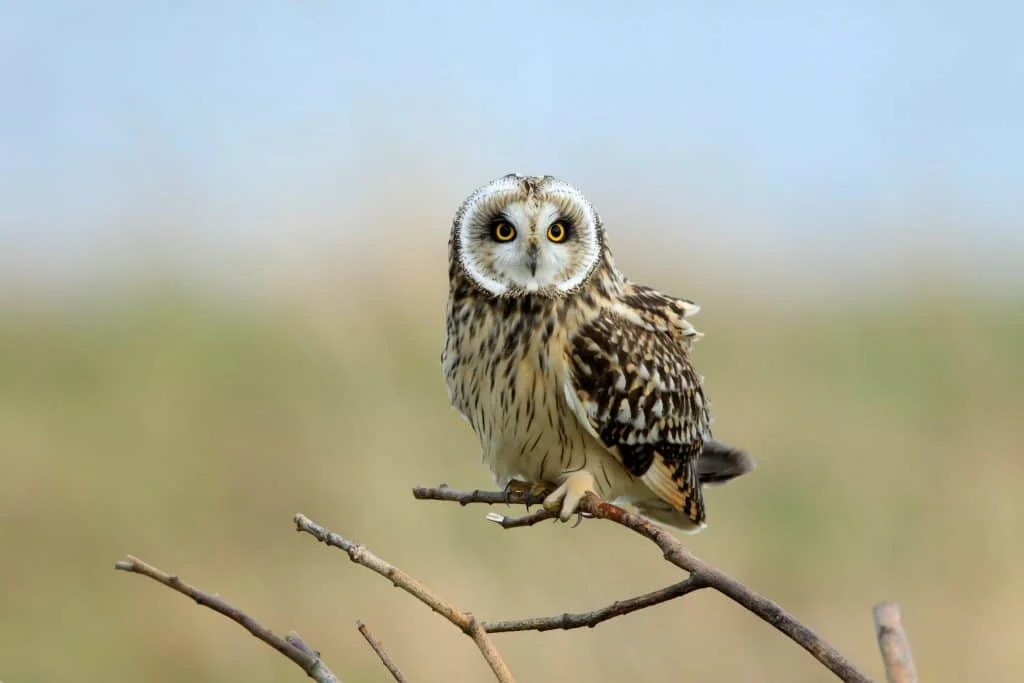
Wingspan
85 to 110 cm
Weight
206–475 g
Life Expectancy
4-12 years
Diet
Voles, Mice, Squirrels
Short-eared owls are a medium sized species of owl that are covered in brown and white spotted feathers.
Their name comes from the fact that they have outwards ear-tufts that are so small that they are barely visible.
You are most likely to see one in areas of low vegetation and these owls have been known to hunt during both day and night-time.
Short-eared owls form loose colonies that usually come together just before the breeding season and are monogamous maters during the breeding season, but it is unknown as to whether they stay together for multiple seasons.
Breeding pairs will make their roosts on the ground in areas of tall grass, they only tend to roost in trees during the winter months especially when it is snowy.
Males will feed the females whilst they are incubating the eggs and will also help defend their territory with a series of harsh calls.
Whilst these birds can be seen throughout all regions of Arkansas, they are not permanent residents and can only be seen in the state outside of their breeding seasons.
They are most commonly seen in winter and most of the recorded sightings of this bird have been in the northeastern areas of the state.
5. Long Eared Owl
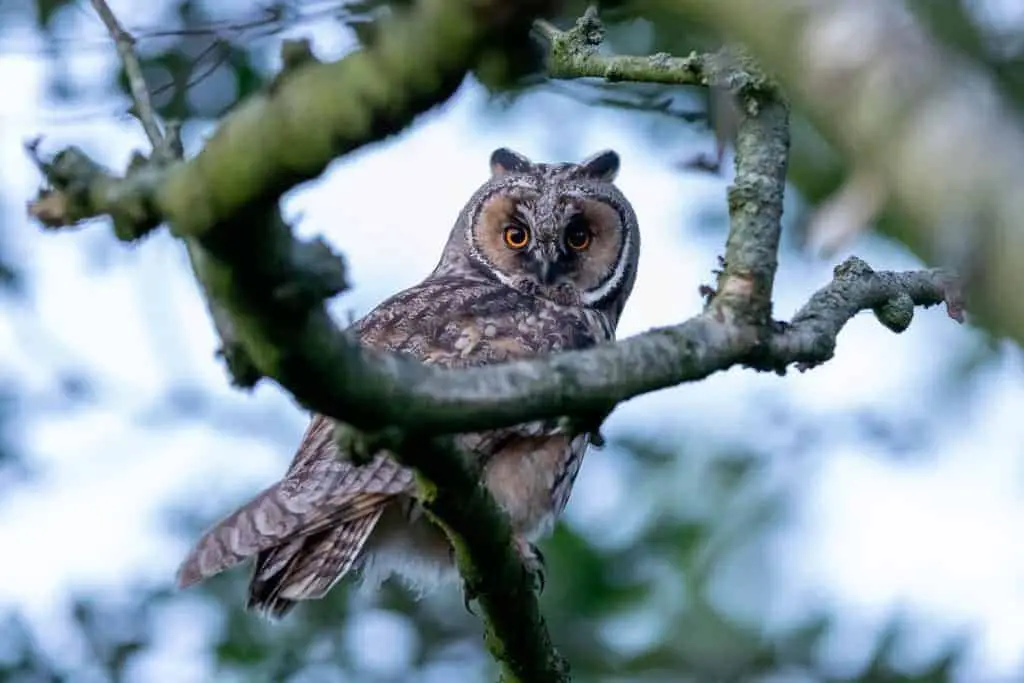
Wingspan
90 to 100cm
Weight
250 g
Life Expectancy
4 years
Diet
Small mammals, mice, rats & rabbits
The Long-Eared Owl is known for its long and prominent feathered ears, which is not surprising considering its name.
It has a very similar range to the Short-eared owl. They are covered with black and brown feathers and have orange faces.
These owls like to roost in loose colonies and make their nests in dense areas of forests.
Outside of the breeding seasons, these colonies can reach up to 100 individuals, but they become less structured and have less individuals during mating seasons.
During the breeding season these colonies will nest near each other, but they will not roost together.
These birds only mate with one individual during the breeding season, although it is not known as to whether they form long term breeding pairs.
Males will perform a series of complex, zigzag flights whilst producing a mating call in an attempt to court a female.
Much like the Short-eared Owl, the Long-eared Owl can be seen throughout all regions of Arkansas but only outside of their breeding seasons.
They are most commonly found in Arkansas during winter and most of the recorded sightings of this bird are in the central areas of the state.
6. Barred Owl
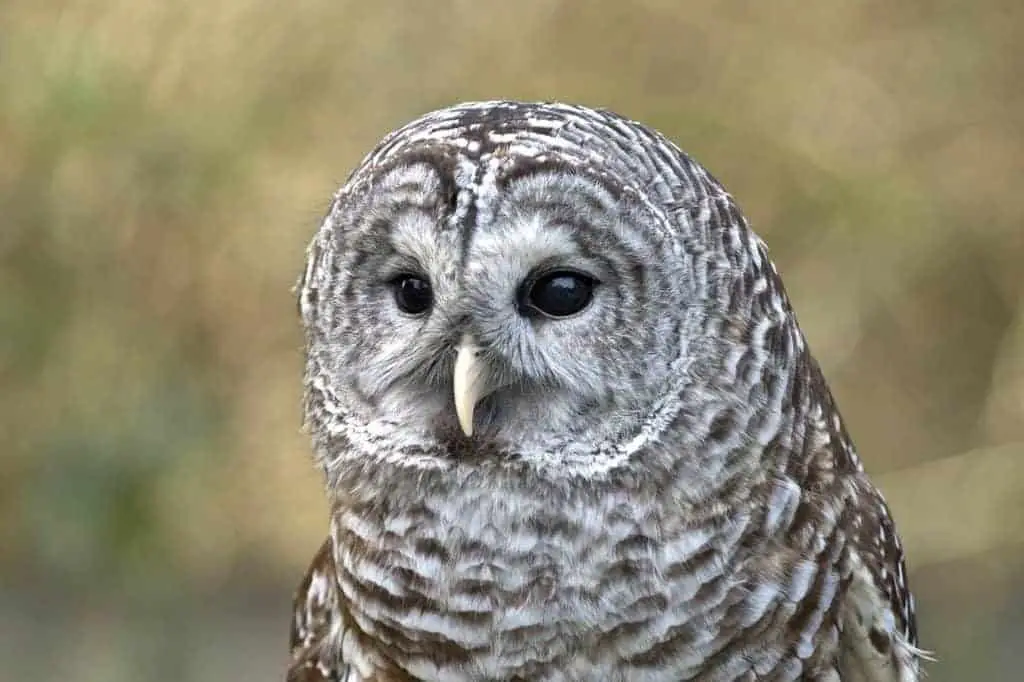
Wingspan
96-125 cm
Weight
468-1,150 g
Life Expectancy
10-23 years
Diet
Small mammals
Barred Owls are a large and stocky species of owl and they are covered with brown and white feathers that form striped bar patterns.
These owls habituate close to bodies of water and if they can, they will make their habitats in areas of dense and mature forests.
Barred Owls are very territorial, and females are the more aggressive ones, however this is only during the breeding season, but they will remain defensive throughout the rest of the year.
To defend their territory, they have been observed using a kind of flight attack where they will collide into other birds, talons first.
These birds are monogamous and are believed to mate for life although there is some speculation surrounding this.
They will raise a single brood of eggs together and if there is a predator, one parent will leave the nest to cause a noisy distraction and prevent the young from being attacked.
These owls are permanent residents of the state and can be seen in all regions. They have a lot of recorded sightings throughout Arkansas but the most concentrated sightings are in the far south of the state.

More Articles.

Birds are known to come in many different colors. Even birds of a similar species
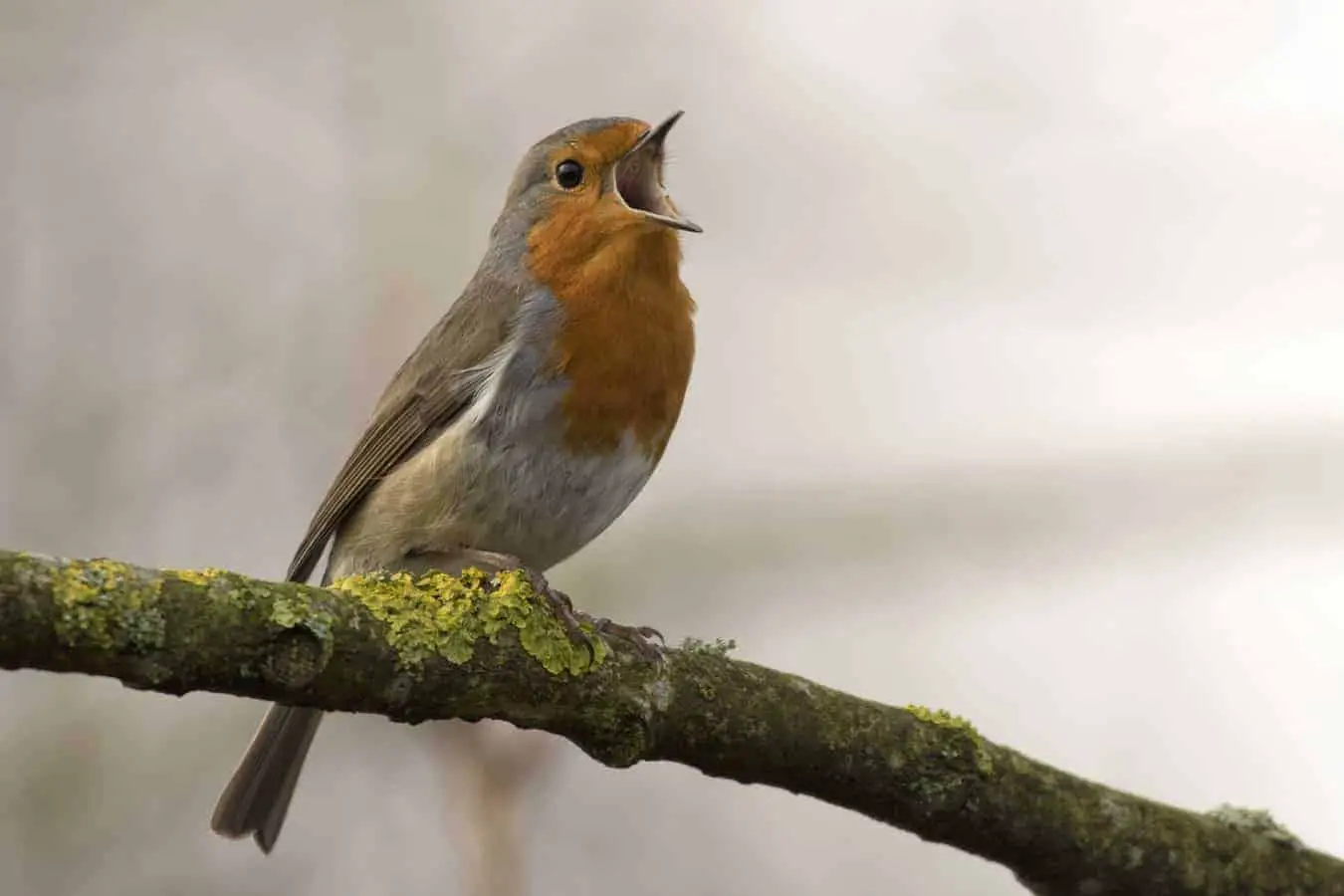
How to Attract Robins to your Yard?
Robins are known for being friendly and energetic birds that love to spend time hanging
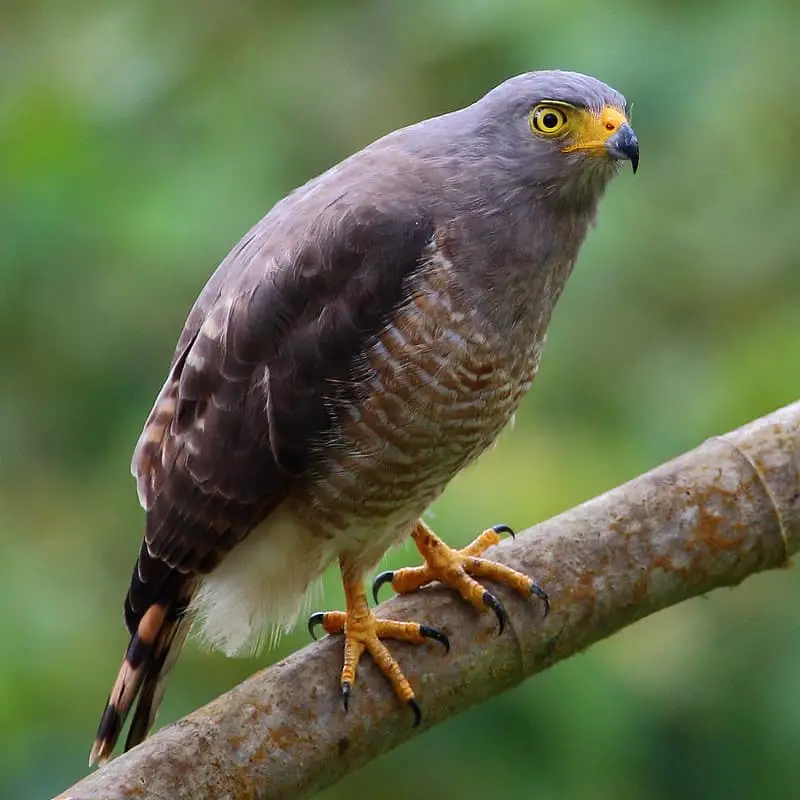
Differences between Hawks, Falcons and Eagles (8 Differences with Pictures and Sounds)
The difference between Hawks, Falcons, and Eagles can be difficult to spot for bird watchers

About Us
We are avid bird-watchers who recently retired, allowing us more time to travel the world. Fortunately, we have managed to visit numerous countries around Europe, Asia, and America. Watching and photographing birds has been a passion for many years and we are making the most of the extra time on our hands!

